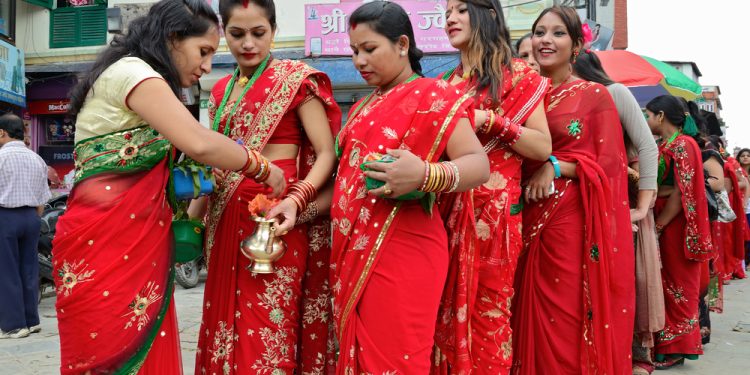
Teej
Teej is one of several Hindu festivals that fall during the Hindu month of Shravana or Bhadrapada, or between July and September on the Gregorian calendar. It is a festival in which women fast and pray to both Shiva and the Goddess Parvati to receive blessings for their marriage. There are three different types of Teej: Hariyali Teej, Kajari Teej, and Hartalika Teej.
History of Teej
The name of this festival is derived from a little crimson insect that often emerges from the ground during the monsoon season and is called Teej. However, the reason this holiday is celebrated is derived from Hindu mythology. It is believed that Goddess Parvati went to the home of Lord Shiva, thereby marking the union between a man and his wife. According to the myth, Parvati had to fast for over 100 years to prove her deep love and unconditional devotion to Lord Shiva before he would accept her as his wife. In another myth, it is said that she had to die and be reborn 108 times before she was allowed to become Shiva’s wife.
Today, Teej is an important festival for women for two reasons. The first reason is that it celebrates a wife’s love and devotion for her husband, symbolized by the union of Lord Shiva and Goddess Parvati. The second reason is that it heralds the rainy season, which provides a much-needed break to those who have been sweltering under the summer heat.
Teej Customs & Celebrations
Teej is not a festival celebrated throughout India. In fact, it is mainly celebrated in Punjab, Uttar Pradesh, Haryana, Bihar, Rajasthan, and in Nepal. In Rajasthan, it is celebrated with a fair called the Monsoon Festival or Sawan Mela. In Nepal, it is celebrated with a large festival and is very important in that area.
Women who celebrate this holiday fast and also wear colorful clothing. Indeed, color is an important component of most Teej festivals, as evidenced by the various colors of yellow, red, blue, and green that can be seen at them.
